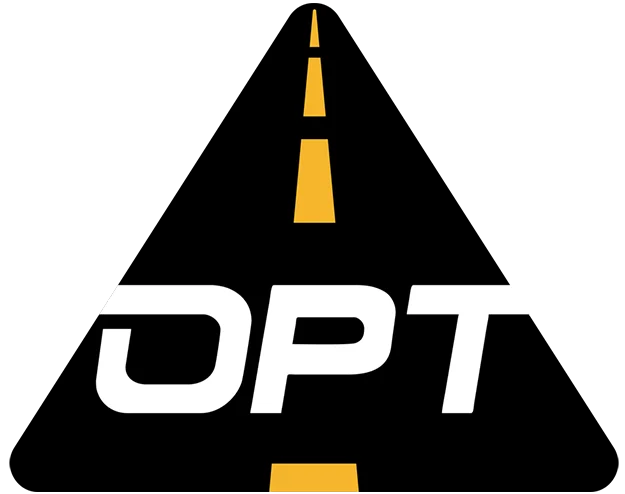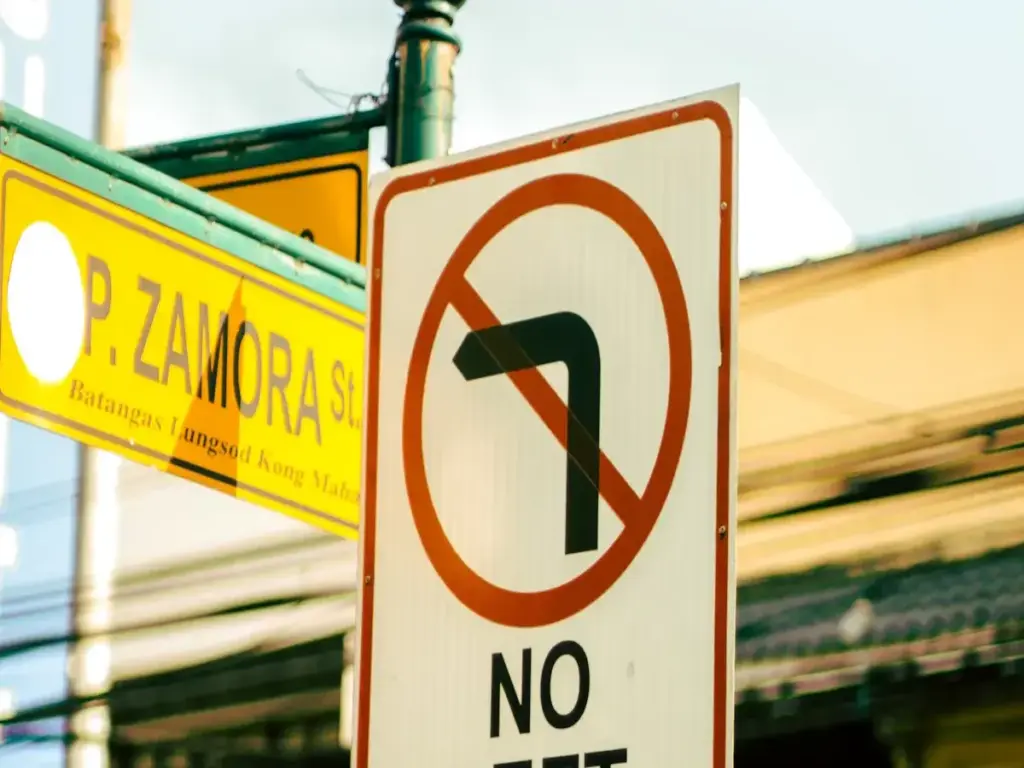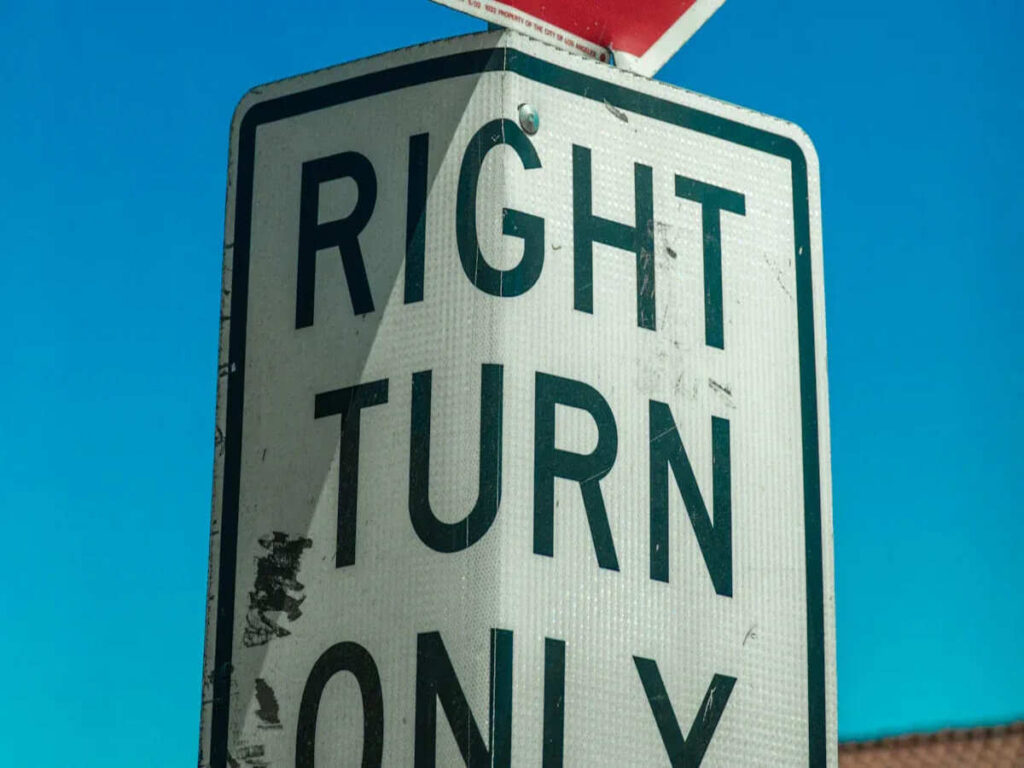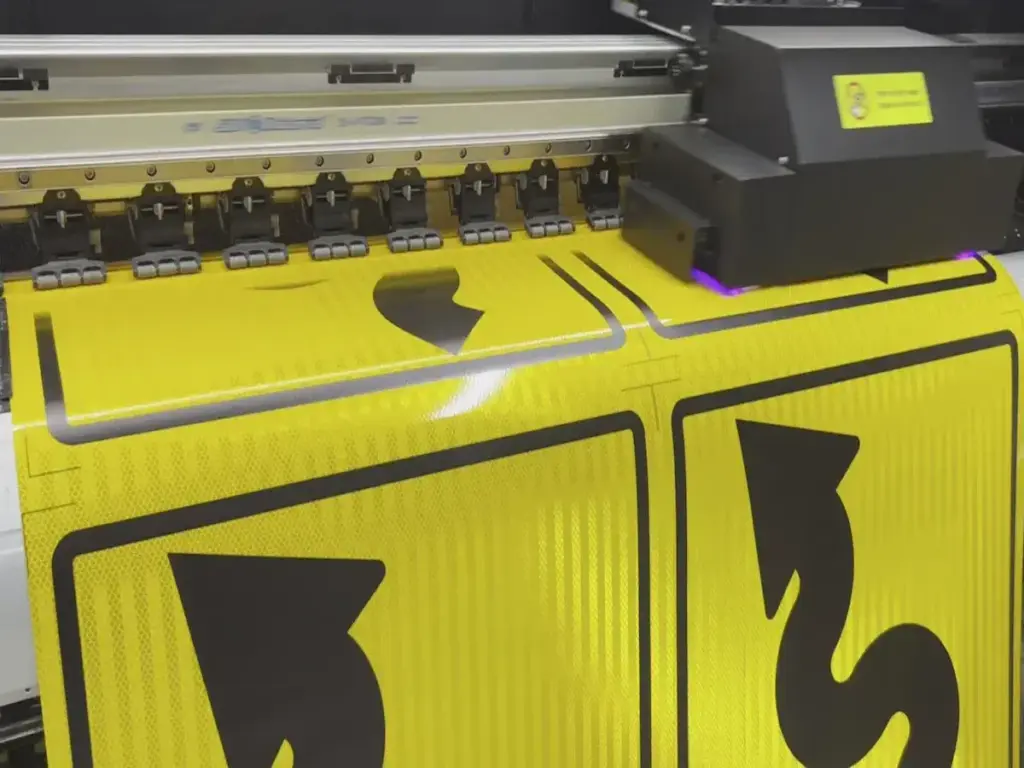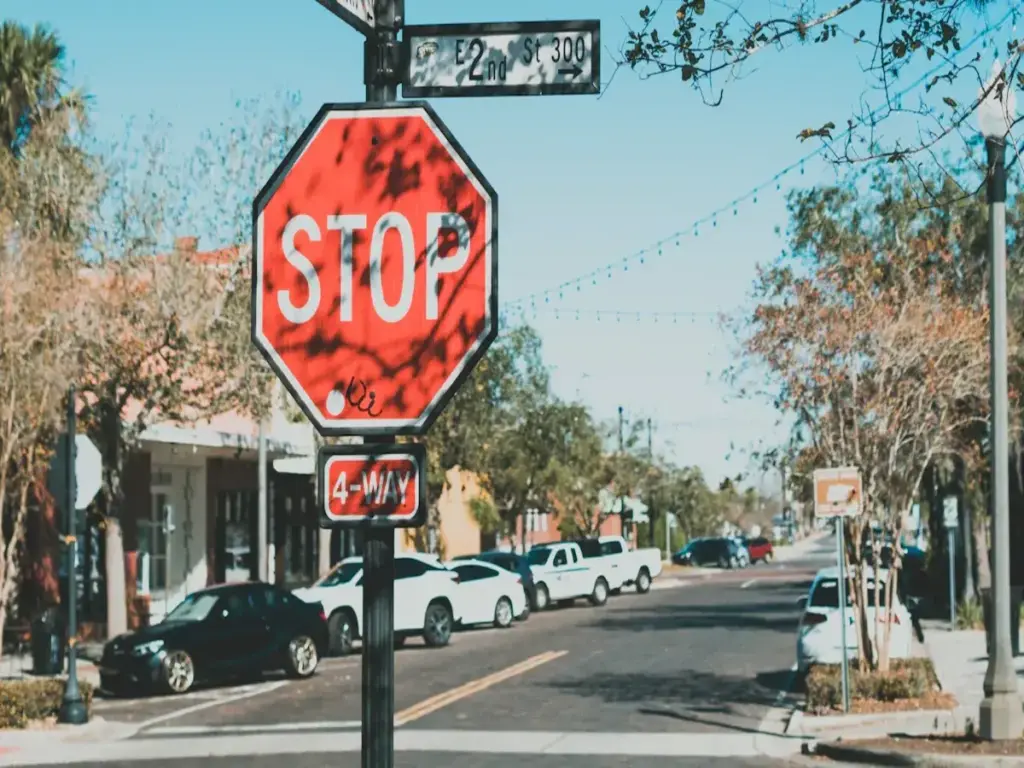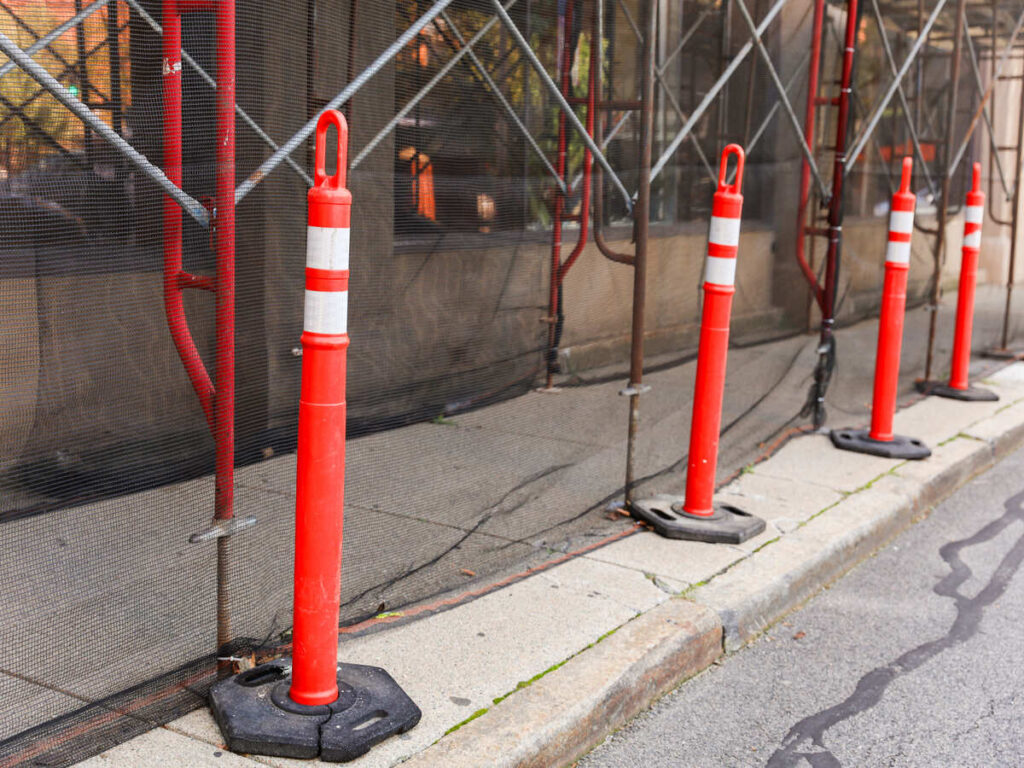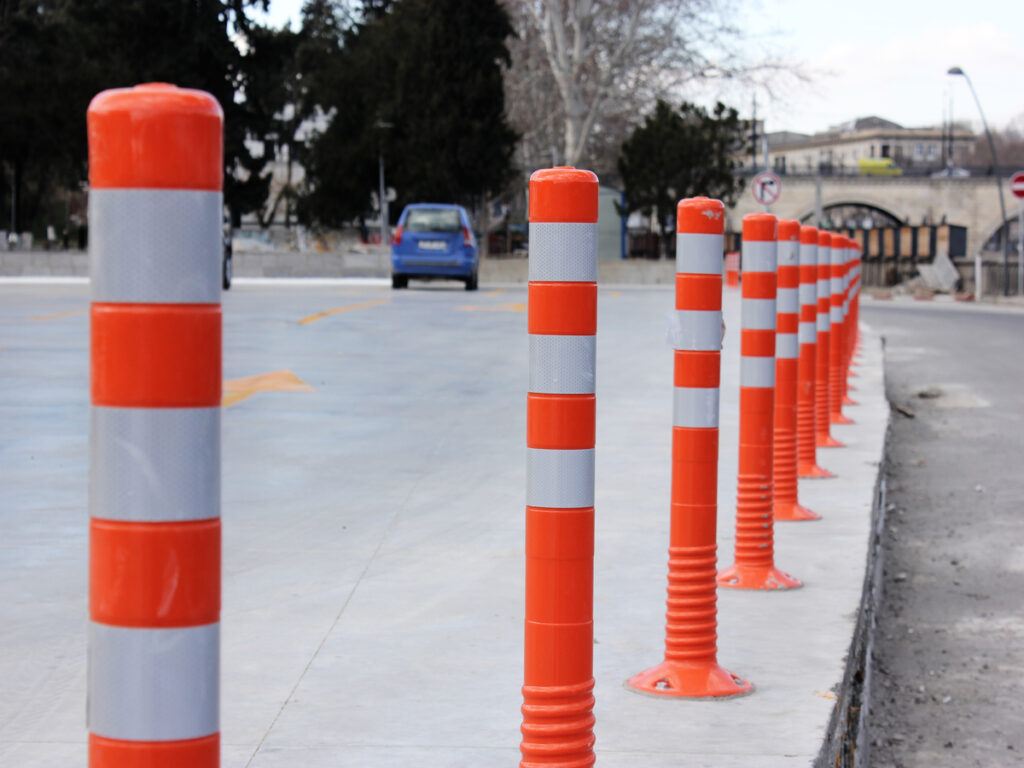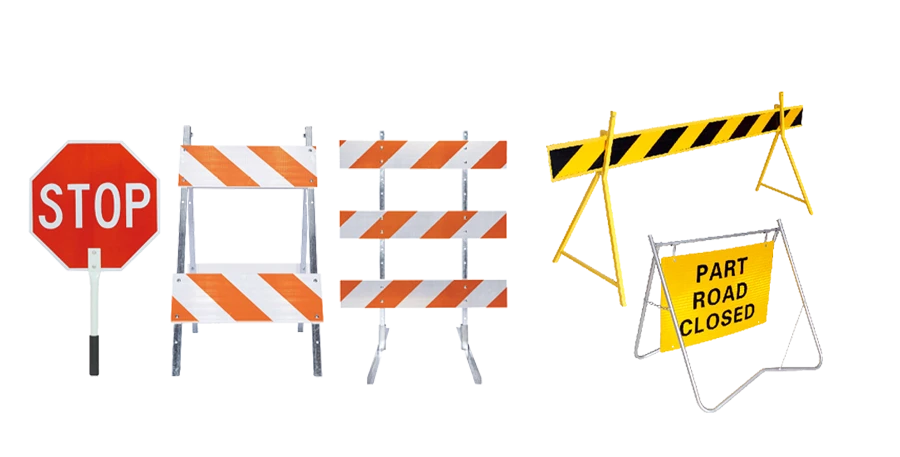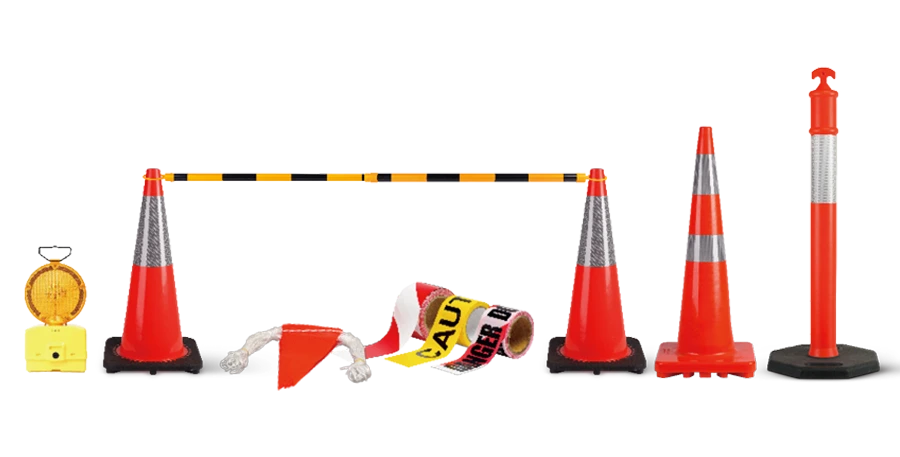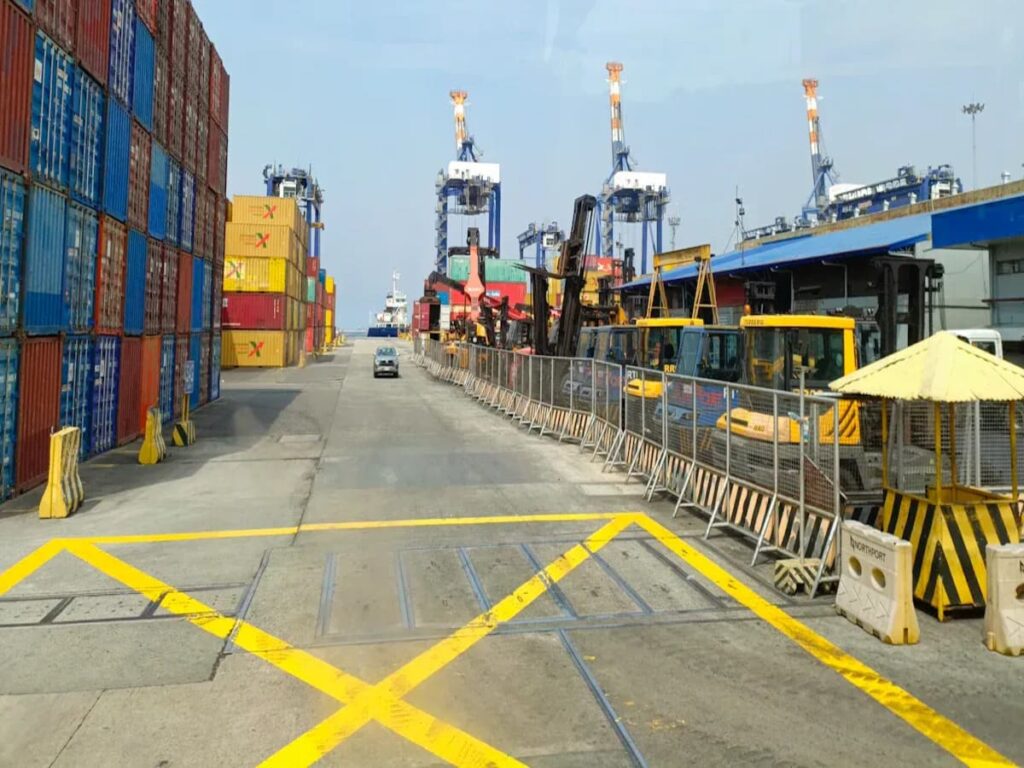
Ports across the United States are experiencing rapid growth, especially in major hubs like Los Angeles and Long Beach. Key statistics include:
- Port of Los Angeles: Processed 9.4 million TEUs in 2024, reflecting a 19% growth.
- Port of Long Beach: Handled 8.8 million TEUs, avec un 20.2% year-over-year increase.
This surge in cargo volume is driving port authorities to adopt innovative solutions and improve traffic management systems to efficiently handle the rising demands.
Traffic control signs play a vital role in this transformation. As congestion grows, these signs not only guide vehicles and equipment but also enhance operational safety, ensuring both smooth traffic flow and worker safety. Intelligent, real-time signage and integrated control systems offer dynamic solutions for controlling busy port areas, minimizing delays, and enhancing safety. As ports continue to expand, especially with advancements in technology, traffic control signs remain crucial to managing both the increasing cargo volume and the safety of personnel and visitors.
À OPTRAFIC, we provide a comprehensive range of traffic control solutions, including high-quality MUTCD traffic control signs à vendre et Signes de messages variables (Machines virtuelles) designed for real-time communication. Our products are tailored to meet the specific needs of traffic management companies and port operators, ensuring that your port operations run smoothly and safely amidst rising traffic demands. Explore our solutions to help you navigate the future of port efficiency.
Principaux à retenir
- Traffic control signs are very important at U.S. ports. They help move cargo when there is more demand. Ces signes montrent que les pilotes. They help stop traffic jams. They also make things safer for everyone.
- Smart signage systems give updates right away. This helps ports change plans fast when traffic changes. Cargo moves faster because of this. There are fewer delays too.
- MUTCD and MASH compliance makes sure signs are easy to see. It also makes sure signs are safe. Ports that use these rules have less confusion. They also have fewer accidents.
- Buying better traffic control signs helps ports for a long time. Il y a moins d'accidents. Maintenance costs go down. Efficiency gets better too.
- Dynamic lane management and automated traffic control keep workers safe. They help ports work better when traffic is busy.
Rising Demands and Traffic Management Challenges at U.S. Ports
Growth in Cargo Volume and Operational Strain
Ports in the United States have moved much more cargo since 2020. The table below shows how container numbers have changed:
| Année | TEUs Handled (millions) | Change (%) |
|---|---|---|
| 2019 | 3.3 | N / A |
| 2020 | 4.4 | +34% |
This increase makes ports work harder. Many things cause this demand:
- More people bought goods during the pandemic.
- There are not enough workers at important ports.
- Old equipment and buildings cannot handle all the new cargo.
- Rules and paperwork slow down port work.
- Big world events, like the war in Ukraine, change supply chains.
“US imports are on course for volumes at a height not seen over the past two years [2022 - 2024], which will test the resilience of supply chains.” – The Loadstar
Addressing Port Congestion and Traffic Flow Issues
Ports get crowded when more cargo arrives. Many things make traffic hard to manage:
| Cause | Description |
|---|---|
| High Container Volumes | More shipping means longer waits and slower unloading. |
| Labor Shortages | Not enough workers makes it harder to move cargo quickly. |
| Infrastructure Limitations | Old tools and systems slow down how fast ports can work. |
| Conditions météorologiques | Bad weather can stop work and make ships wait longer. |
| Retards de douane | Long customs checks make cargo wait even more. |
| Reliance on Manual Processes | Doing things by hand takes more time and slows everything down. |
Ports need to watch ship traffic and cargo movement closely. Using data helps them spot problems early and fix them faster.
Enhancing Worker and Vessel Safety with Traffic Control
Traffic control helps keep everyone safe at ports. These systems show drivers and ships where to go, helping to stop crashes and accidents. New technology and automation make moving cargo safer. Watching traffic and using smart schedules helps ports plan better. Traffic control signs for sale assist in maintaining safety and efficiency, allowing cargo to move through busy areas without problems.
Optimizing Efficiency with Smart Port Traffic Control Signs
Leveraging Real-Time Traffic Updates for Operational Gains
Smart port operators use real-time traffic updates to help vehicles and ships. These updates show where traffic is busy. Teams can act fast when they see problems. Smart signs tell trucks where to go and where to wait. This helps stop delays and makes work faster. Workers get easy instructions and do not get confused. Smart systems warn teams about changes in ship times or cargo arrivals. Ports that use these updates move goods quickly and keep things running well.
Dynamic Lane Management for Peak Traffic Hours
Dynamic lane management changes which lanes drivers use when it gets busy. Smart signs tell drivers what lane to use and when to switch. This helps ports handle more vehicles and stops traffic jams. The table below shows how these plans make traffic better:
| Stratégie | Expected Outcome |
|---|---|
| Improve average corridor travel time during peak periods | Trucks and workers get shorter travel times |
| Reduce corridor trips per year | Fewer trips happen because of better planning |
| Increase share of lanes using dynamic pricing | More lanes use flexible pricing |
| Implement active parking management | Parking is easier and drivers wait less |
Smart port teams watch traffic and change lanes when needed. Dynamic management keeps cargo moving and stops traffic from getting stuck.
Key Safety Enhancements with Advanced Signage
Advanced smart signs help keep workers and equipment safe. These signs warn about dangers and show safe ways to go. Smart systems use sensors to find risks and change messages fast. Workers see alerts for busy traffic or unsafe places. Smart port managers use these tools to stop accidents. Teams follow clear directions and stay away from danger. Safety gets better when everyone knows where to go and what to do.
Conseil: Smart signs can help lower accidents by giving quick warnings and instructions. Traffic control signs for sale are essential in implementing these smart systems, ensuring timely responses and enhancing safety.
Efficiency Gains through Real-Time Traffic Signage in Port Operations
Streamlining Vessel Turnaround Times with Smart Signage
Smart signage helps port teams move ships faster. Operators use automated stacking cranes and AI-powered berth planning. These tools guide ships and trucks to the right places. They show real-time updates to everyone. Ports using smart signage see big changes:
- Automation cuts container dwell time by 40%.
- One Asian port saw ship turnaround times drop by 35%.
- The port moved 20% more cargo each month without new berths.
Ships wait less and move goods more quickly. Teams get clear instructions. Cargo moves smoothly through busy terminals.
Enhancing Worker Safety with Automated Traffic Control
Automated traffic control keeps workers safe. Machines and sensors watch port areas for danger. They respond fast to any hazards. The table below shows how automation helps safety:
| Description | Impact on Worker Safety |
|---|---|
| Machines do the same tasks with great care | Fewer accidents from mistakes or tired workers |
| Semi-automatic systems spot dangers quickly | Faster fixes for equipment problems, réduire les risques |
| Sensors and AI check tasks | More accurate work, making things safer |
| Automation removes mistakes from risky jobs | Fewer accidents during dangerous work |
| Man-machine teamwork lowers heavy lifting | Less chance of getting hurt near machines |
Workers follow signals and alerts to stay safe. Automated systems help everyone know where to go and what to do.
Maximizing Port Capacity with Integrated Traffic Systems
Integrated traffic systems help ports use space better. When ports share information, they move more cargo without delays. These systems connect ports, shipping companies, and cargo owners. Here are some benefits:
- Port alliances share resources to stop congestion.
- Working with shipping companies makes ports work better.
- Multi-port systems fix berth problems and help ports compete.
- Integration lets ports change capacity and market share.
- Cargo owners pick ports with better integrated systems.
Operators see more ships and trucks moving through terminals. Ports handle more cargo and keep traffic moving. This helps ports grow and meet higher demand.
Types of Port Signs and Their Crucial Applications
Guides: Directing Traffic and Container Movement
Guide signs help drivers and workers find their way in busy ports. These signs show where to go and point out important places. They mark container yards and loading zones. Operators use guide signs to move containers the right way. This stops confusion and helps everyone work faster. Clear traffic control signs mean less waiting and smoother traffic.
| Contrôle de la circulation | Description | Application |
|---|---|---|
| Guides | Show routes and destinations | Help trucks, ships, and workers reach the right spot |
| Signal Heads | Control lights at intersections | Keep traffic moving at busy crossings |
| Detectors | Find vehicles for signal timing | Help with lane choices and entry spots |
Conseil: Good guide signs help new drivers and crews find their way in new terminals.
Panneaux d'avertissement: Ensuring Safe Port Operations
Warning signs tell people about dangers in the port. Ces signes utilisent couleurs vives and easy-to-see symbols. They warn about heavy machines, virages tranchants, or off-limits areas. Workers and visitors see these signs and know to be careful. Warning signs also show where people should walk and where cars should drive. Cela aide à empêcher les accidents de se produire.
| Role of Barrier Signs | Description |
|---|---|
| Quick Hazard Warnings | Signs use symbols and colors to show danger fast |
| Remind Safety Rules | Remind workers to follow safety steps, like wearing PPE |
| Separate People and Vehicles | Mark paths for walking and driving to stop crashes |
| Help in Emergencies | Show people where to go if there is an emergency |
| Share New Risks | Tell about new dangers from changing tools or work |
Note: Updating warning signs often helps everyone know about new dangers as port work changes.
Signes de messages variables (Machines virtuelles): Real-Time Traffic Management
Signes de messages variables (Machines virtuelles) use screens to give updates to drivers and workers. These signs can change messages fast when things change. Port managers use VMS to guide trucks when it gets busy. They warn about slowdowns or tell people what to do in emergencies. VMS helps keep traffic moving and makes things safer by giving quick instructions.
- VMS gives updates to drivers during loading and unloading.
- Managers use VMS to control which lanes are open and stop traffic jams.
- VMS keeps people safe by warning about problems or changes.
🚦 Smart VMS systems help ports act fast when traffic changes, making work safer and smoother.
Compliance and Standards for Port Traffic Control Signs
Importance of MUTCD and MASH Compliance in Port Signage
Port operators have to follow strict rules for traffic control signs. Le Manuel sur les dispositifs de contrôle de la circulation uniformes (Mutcd) gives rules for sign shapes, couleurs, and messages. These rules help everyone know what signs mean right away. MUTCD makes sure signs look the same at every port. This helps truck drivers and workers stay safe.
Le Manuel pour évaluer le matériel de sécurité (ÉCRASER) checks how signs and barriers work in crashes. MASH compliance means signs can take hits and still protect people. Ports that use MUTCD and MASH standards care about safety and doing things well.
Conseil: Ports that use MUTCD and MASH rules help stop confusion and lower accident chances.
| Standard | Ce qu'il couvre | Pourquoi ça compte |
|---|---|---|
| Mutcd | Sign design and placement | Clair, uniform communication |
| ÉCRASER | Crash performance and safety | Reliable protection in impact |
Benefits of MASH-Certified Signs for Enhanced Port Safety and Efficiency
MASH-certified signs give ports many good things. These signs are made from strong materials and pass hard safety tests. Workers and drivers trust MASH-certified signs because they work well in emergencies.
Key benefits of MASH-certified signs:
- Stand up to bad weather and hard hits
- Help stop injuries in accidents
- Make traffic move better with clear instructions
- Cost less to fix because they last longer
Ports that buy MASH-certified signs have fewer accidents and smoother work. Safety teams use these signs to guide vehicles and keep workers safe. MASH certification also helps ports follow federal and state laws.
🚧 MASH-certified signs help ports move more cargo and keep people safe.
En résumé: MUTCD and MASH compliance ensures port traffic signs deliver clear messages and provide strong safety. Ports that use certified signs, including traffic control signs for sale, build trust with workers, conducteurs, and shipping partners.
Tendances futures: Port Signage Updates and Automation
Adapting Port Signage to Meet the Needs of Automation
Port operators notice big changes as automation grows. Machines and smart systems help guide trucks and ships. Signs need to work with these new tools. Digital signs give clear directions to drivers and workers. Sensors help signs change messages quickly. Teams use these signs to keep traffic moving.
Operators pick signs that connect with computers and sensors. These signs help machines share information. Workers see updates on screens and know where to go.
Note: Digital signs help ports react fast when traffic changes.
Ports use signs that warn about robots and automated vehicles. These signs help keep people safe near machines. Traffic control signs for sale are updated regularly to match new technology.
Here are ways ports change signs for automation:
- Use digital displays for quick updates.
- Connect signs to sensors and cameras.
- Show clear paths for robots and vehicles.
- Update safety warnings for new machines.
Integration of Smart Signage Systems with Port Traffic Management
Smart signage systems now work with port traffic management tools. Operators link signs to software that tracks trucks, ships, and cargo.
A smart system helps teams spot traffic problems early. Signs change messages to guide drivers away from busy areas.
Managers use smart signs to control lane use and parking.
| Smart Sign Feature | Benefit for Port Traffic |
|---|---|
| Real-time updates | Faster response to congestion |
| Automated lane signals | Smooth flow during busy hours |
| Emergency alerts | Quick action in dangerous events |
Teams use smart signs to share updates with everyone. Drivers get clear instructions and avoid delays.
Smart signage helps ports move more cargo and keeps workers safe.
Conseil: Smart signs and traffic management systems work together to make ports faster and safer.
Études de cas: Practical Benefits of Port Signage Upgrades
Success Stories from Top Ports: Signage for Increased Efficiency and Safety
Big U.S. ports got good results after upgrading their traffic control signs. The Port of Houston put smart variable message signs (Machines virtuelles) in its terminals. These signs gave real-time updates to truck drivers and vessel operators. Houston teams saw truck wait times drop by 25%. Workers moved cargo faster and stopped bottlenecks.
The Port of Savannah added new guide and warning signs in busy areas. Operators saw fewer accidents near container yards. Safety teams saw 30% fewer minor incidents. Clear signs helped new drivers find their way and follow safety rules.
The Port of Los Angeles used automated lane signals during busy times. Managers sent trucks to open lanes and stopped congestion. The port handled more containers each day. Workers felt safer because they got clear instructions.
Conseil: Ports using smart signage systems can react fast to traffic changes and keep work running smoothly, with traffic control signs for sale helping to maintain operational efficiency.
Long-Term Benefits of Investing in Advanced Traffic Control Signs
Ports that buy advanced traffic control signs get many long-term benefits. These upgrades make safety and efficiency better every year. Teams spend less time fixing broken signs because new materials last longer. Ports save money on repairs and replacements.
| Avantage | Description |
|---|---|
| Moins d'accidents | Clear signs help stop crashes and injuries |
| Faster Cargo Movement | Smart signs guide trucks and ships quickly |
| Lower Maintenance Costs | Strong signs need fewer repairs |
| Meilleure conformité | Certified signs meet safety standards |
Operators see smoother traffic and more cargo moving. Shipping companies like ports with good signage. Workers trust signs that give clear directions and warnings.
🚀 Buying advanced traffic control signs for sale helps ports grow and handle more work with confidence.
Traffic control signs for sale and real-time updates help ports work better. LED signs show drivers important info right away. This helps them pick the best way to go. Dynamic signs can change what they say using live data. This makes things safer and keeps traffic moving. New studies show AI-powered signs help plan where ships go and when they arrive. This cuts down on traffic jams. Buying smart signs gets ports ready for new problems. As more cargo comes in, advanced traffic control signs will help U.S. ports stay safe and work well.
FAQ
What factors contribute to port performance and throughput?
Port performance is influenced by several key factors:
- Total Tonnage: The amount of cargo handled, which includes domestic, import, and export tonnage. Ports with higher throughput can manage larger volumes of trade efficiently.
- Container Throughput: The number of twenty-foot equivalent units (TEUs) handled. This is a major measure for ports handling containerized cargo.
- Vessel Calls: The frequency of vessel arrivals, including containerships, tankers, and other vessel types, directly impacts port throughput.
- Berthing Time: The time vessels spend at the port. Ports with efficient berthing processes reduce delays and improve throughput .
How do port authorities manage increasing cargo volumes?
To manage rising cargo volumes, port authorities implement strategies such as:
- Expanding Port Infrastructure: Upgrading docks, grues, and other facilities to handle larger ships and more containers.
- Optimizing Berthing: Improving the efficiency of vessel docking to reduce time spent in port and increase turnover.
- Intermodal Connections: Enhancing rail and road connections to facilitate faster cargo movement beyond the port.
What are the challenges facing ports in 2025?
Key challenges for ports in 2025 inclure:
- Supply Chain Disruptions: Ongoing supply chain issues, especially in container handling and vessel scheduling, affect port efficiency.
- Infrastructure Strain: With growing cargo volumes, many ports are facing challenges in maintaining and expanding infrastructure to meet demand.
- Impact environnemental: Ports are increasingly focused on reducing their environmental footprint, including managing emissions from ships and port operations.
What types of traffic control signs do ports use most often?
Ports typically use a variety of signs to manage traffic and ensure safety, y compris:
- Guides: These direct traffic to the correct routes, ensuring smooth access to key areas of the port.
- Panneaux d'avertissement: These alert workers and drivers to potential hazards, such as vehicle or equipment congestion.
- Signes de messages variables (Machines virtuelles): These provide real-time updates, helping to adjust traffic flow dynamically based on current port conditions and needs .
How do smart signs improve port efficiency?
Smart signs give quick instructions to drivers and workers. They help teams act fast when traffic changes. Ports move cargo faster and have fewer delays. Smart signs also help stop accidents.
Why is MUTCD and MASH compliance important for port signage?
MUTCD and MASH compliance means signs follow safety and design rules. Ports use certified signs to keep workers and drivers safe. Following these rules helps shipping partners trust the port and meets laws.
How can traffic control signs for sale help during emergencies at ports?
En cas d'urgence, Signes de contrôle de la circulation, particularly VMS, play a key role by:
- Enhancing safety and response times: Clear signage helps port teams react swiftly to emergencies, ensuring safety for both workers and visitors.
- Providing immediate instructions: VMS can be updated in real-time to direct workers and vehicles to safer areas, assisting in evacuations or other urgent situations.
What role do traffic control signs for sale play in maintaining safety during peak cargo seasons?
During high-traffic periods, traffic control signs are critical for:
- Reducing accidents: Clair, visible signs help prevent mishaps by directing vehicles and workers through busy port zones safely.
- Streamlining operations: Dynamic signs and real-time updates ensure smooth transitions for vehicles, minimizing delays during peak cargo seasons.
Explore OPTRAFFIC’s range of high-quality traffic control signs for sale, designed to enhance port safety and efficiency during busy cargo seasons.
